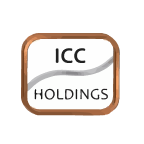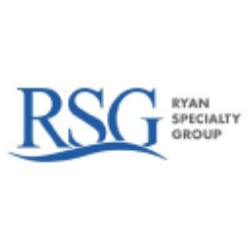TRRSF

Trisura Group Ltd.
TRRSF
(2.0)26,75 USD
2.28% ROA
16.3% ROE
22.33x PER
2.006.181.759,14 USD
14.14% DER
0% Yield
3.76% NPM
Trisura Group Ltd. Stock Analysis
Trisura Group Ltd. Fundamental Analysis
Fundamental analysis in stock investing is like studying the foundation of a house before buying it. It involves looking at a company's financial health, like its earnings, assets, and debts, to determine if it's a good investment based on its fundamental strength and potential for growth.
| # | Analysis | Rating |
|---|---|---|
| 1 |
DER
The stock has a low debt to equity ratio (16%), which means it has a small amount of debt compared to the ownership it holds |
|
| 2 |
Revenue Growth
With continuous growth in revenue over the last five years, this company has proven to be a lucrative investment option, showcasing its strong financial performance. |
|
| 3 |
ROE
The stock's ROE falls within an average range (4.72%), demonstrating satisfactory profitability and efficiency in utilizing shareholders' equity. |
|
| 4 |
ROA
The stock's ROA (0.78%) indicates that it's doing well in making money from the things it owns. This makes it a good option to invest and make consistent profits. |
|
| 5 |
PBV
The stock's PBV ratio (2.84x) indicates a justifiable valuation, presenting a compelling choice for investors seeking reasonable returns. |
|
| 6 |
Buffet Intrinsic Value
Based on Warren Buffett's formula, the company's stock appears undervalued (5.381), presenting an attractive investment chance with its intrinsic value surpassing the current market price. |
|
| 7 |
Net Profit Growth
This company's net profit has remained flat over the past five years, suggesting a lack of growth and making it a less attractive investment opportunity. |
|
| 8 |
Assets Growth
Company's revenue has stayed stagnant, showing no signs of improvement and making it a less favorable choice. |
|
| 9 |
Graham Number
The Graham number analysis indicates that this company's stock price is likely overpriced, raising concerns about its investment potential. |
|
| 10 |
Dividend Growth
Potential investors should be aware that the company's dividend growth has shown no upward trend in the past three years, indicating limited potential for increased returns. |
|
| 11 |
Dividend
The company's lack of dividends in the past three years may concern investors seeking regular income. |
Trisura Group Ltd. Technical Analysis
Technical analysis in stock investing is like reading the patterns on a weather map to predict future weather conditions. It involves studying past stock price movements and trading volumes to make predictions about where a stock's price might go next, without necessarily looking at the company's financial health.
| # | Analysis | Recommendation |
|---|---|---|
| 1 | Awesome Oscillator | Hold |
| 2 | MACD | Buy |
| 3 | RSI | Hold |
| 4 | Stoch RSI | Sell |
Trisura Group Ltd. Price Chart
Financial Statements
Financial statements are like report cards for companies. They show how much money a company makes (income statement), what it owns and owes (balance sheet), and where it spends its money (cash flow statement), helping stock investors understand if a company is healthy and worth investing in.
Income Statements
An income statement for a company is like a scoreboard for its profits and losses. It shows how much money the company made (revenue) and how much it spent to make that money (expenses), helping stock investors see if a company is making a profit or not.
Revenue in stock investing is the total amount of money a company earns from its sales, and it's a key factor that investors consider to assess a company's financial performance and growth potential.
| Year | Revenue | Growth |
|---|---|---|
| 2016 | 95.830.000 | |
| 2017 | 98.296.000 | 2.51% |
| 2018 | 118.689.000 | 17.18% |
| 2019 | 137.525.000 | 13.7% |
| 2020 | 226.632.000 | 39.32% |
| 2021 | 349.877.000 | 35.23% |
| 2022 | 526.102.000 | 33.5% |
| 2023 | 2.366.780.000 | 77.77% |
| 2023 | 711.339.000 | -232.72% |
| 2024 | 3.161.800.000 | 77.5% |
Research and Development Expenses are the costs a company incurs to create and improve its products or services, which can be important for investors to evaluate a company's innovation and potential for future growth.
| Year | Research and Development Expenses | Growth |
|---|---|---|
| 2016 | 0 | |
| 2017 | 0 | 0% |
| 2018 | 0 | 0% |
| 2019 | 0 | 0% |
| 2020 | 0 | 0% |
| 2021 | 0 | 0% |
| 2022 | 0 | 0% |
| 2023 | 0 | 0% |
| 2023 | 0 | 0% |
| 2024 | 0 | 0% |
General and Administrative Expenses are the costs a company incurs to run its day-to-day operations, such as office rent, salaries, and utilities, which investors consider to understand a company's overall efficiency and management effectiveness.
| Year | General and Administrative Expenses | Growth |
|---|---|---|
| 2016 | 0 | |
| 2017 | 0 | 0% |
| 2018 | 0 | 0% |
| 2019 | 0 | 0% |
| 2020 | 0 | 0% |
| 2021 | 0 | 0% |
| 2022 | 0 | 0% |
| 2023 | 0 | 0% |
| 2023 | 0 | 0% |
| 2024 | 0 | 0% |
EBITDA stands for Earnings Before Interest, Taxes, Depreciation, and Amortization. It is a measure that helps stock investors analyze a company's profitability by looking at its earnings without considering certain expenses. This helps to get a clearer picture of the company's financial performance and its ability to generate cash flow.
| Year | EBITDA | Growth |
|---|---|---|
| 2016 | 5.371.000 | |
| 2017 | 3.606.000 | -48.95% |
| 2018 | 14.605.000 | 75.31% |
| 2019 | 7.444.000 | -96.2% |
| 2020 | 42.110.000 | 82.32% |
| 2021 | 84.371.000 | 50.09% |
| 2022 | 41.700.000 | -102.33% |
| 2023 | 85.952.000 | 51.48% |
| 2023 | -5.400.000 | 1691.7% |
| 2024 | 4.820.000 | 212.03% |
Gross profit is the money a company makes from selling its products or services after subtracting the cost of producing or providing them, and it is an important measure for investors to understand a company's profitability.
| Year | Gross Profit | Growth |
|---|---|---|
| 2016 | 95.830.000 | |
| 2017 | 98.296.000 | 2.51% |
| 2018 | 118.689.000 | 17.18% |
| 2019 | 137.525.000 | 13.7% |
| 2020 | 226.632.000 | 39.32% |
| 2021 | 349.877.000 | 35.23% |
| 2022 | 526.102.000 | 33.5% |
| 2023 | 2.366.780.000 | 77.77% |
| 2023 | 2.838.852.000 | 16.63% |
| 2024 | 3.161.800.000 | 10.21% |
Net income in stock investing is like the money a company actually gets to keep as profit after paying all its bills, and it's an important measure to understand how well a company is doing financially.
| Year | Net Profit | Growth |
|---|---|---|
| 2016 | 2.953.000 | |
| 2017 | -342.000 | 963.45% |
| 2018 | 8.542.000 | 104% |
| 2019 | 4.998.000 | -70.91% |
| 2020 | 32.442.000 | 84.59% |
| 2021 | 62.559.000 | 48.14% |
| 2022 | 27.795.000 | -125.07% |
| 2023 | 59.352.000 | 53.17% |
| 2023 | 66.941.000 | 11.34% |
| 2024 | 108.564.000 | 38.34% |
EPS, or earnings per share, is a measure that shows how much profit a company has earned for each outstanding share of its stock, and it is important for stock investors as it helps understand the profitability of a company and compare it with other companies in the market.
| Year | Earning per Share (EPS) | Growth |
|---|---|---|
| 2016 | 0 | |
| 2017 | 0 | 0% |
| 2018 | 0 | 0% |
| 2019 | 0 | 0% |
| 2020 | 1 | 0% |
| 2021 | 2 | 100% |
| 2022 | 1 | 0% |
| 2023 | 1 | 100% |
| 2023 | 1 | 0% |
| 2024 | 2 | 50% |
Cashflow Statements
Cashflow statements show the movement of money in and out of a company, helping stock investors understand how much money a company makes and spends. By examining cashflow statements, investors can assess if a company is generating enough cash to pay its bills, invest in growth, and provide returns to stockholders.
Free cash flow is the leftover cash that a company generates after covering its operating expenses and capital expenditures, which is important for stock investors as it shows how much money a company has available to invest in growth, pay dividends, or reduce debt.
| Year | Free Cashflow | Growth |
|---|---|---|
| 2016 | 7.078.000 | |
| 2017 | 15.720.000 | 54.97% |
| 2018 | 19.626.000 | 19.9% |
| 2019 | 55.246.000 | 64.48% |
| 2020 | 82.047.000 | 32.67% |
| 2021 | 303.389.000 | 72.96% |
| 2022 | 148.799.000 | -103.89% |
| 2023 | 154.555.000 | 3.72% |
| 2023 | 257.199.000 | 39.91% |
| 2024 | -229.972.000 | 211.84% |
Operating cash flow represents the cash generated or consumed by a company's day-to-day operations, excluding external investing or financing activities, and is crucial for stock investors as it shows how much cash a company is generating from its core business operations.
| Year | Operating Cashflow | Growth |
|---|---|---|
| 2016 | 7.881.000 | |
| 2017 | 16.813.000 | 53.13% |
| 2018 | 20.292.000 | 17.14% |
| 2019 | 58.377.000 | 65.24% |
| 2020 | 83.343.000 | 29.96% |
| 2021 | 306.849.000 | 72.84% |
| 2022 | 150.930.000 | -103.31% |
| 2023 | 154.894.000 | 2.56% |
| 2023 | 257.913.000 | 39.94% |
| 2024 | -228.114.000 | 213.06% |
Capex, short for capital expenditures, refers to the money a company spends on acquiring or upgrading tangible assets like buildings, equipment, or technology, which is important for stock investors as it indicates how much a company is investing in its infrastructure to support future growth and profitability.
| Year | Capital Expenditure | Growth |
|---|---|---|
| 2016 | 803.000 | |
| 2017 | 1.093.000 | 26.53% |
| 2018 | 666.000 | -64.11% |
| 2019 | 3.131.000 | 78.73% |
| 2020 | 1.296.000 | -141.59% |
| 2021 | 3.460.000 | 62.54% |
| 2022 | 2.131.000 | -62.37% |
| 2023 | 339.000 | -528.61% |
| 2023 | 714.000 | 52.52% |
| 2024 | 1.858.000 | 61.57% |
Balance Sheet
Balance sheets provide a snapshot of a company's financial health and its assets (such as cash, inventory, and property) and liabilities (like debts and obligations) at a specific point in time. For stock investors, balance sheets help assess the company's overall worth and evaluate its ability to meet financial obligations and support future growth.
Equity refers to the ownership interest or stake that shareholders have in a company, representing their claim on its assets and earnings after all debts and liabilities are paid.
| Year | Equity | Growth |
|---|---|---|
| 2016 | 86.896.000 | |
| 2017 | 121.502.000 | 28.48% |
| 2018 | 129.952.000 | 6.5% |
| 2019 | 190.329.000 | 31.72% |
| 2020 | 289.864.000 | 34.34% |
| 2021 | 358.789.000 | 19.21% |
| 2022 | 483.294.000 | 25.76% |
| 2023 | 619.429.000 | 21.98% |
| 2023 | 598.686.000 | -3.46% |
| 2024 | 695.186.000 | 13.88% |
Assets represent the valuable resources that a company owns, such as cash, inventory, property, and equipment, and understanding a company's assets helps investors assess its value and potential for generating future profits.
| Year | Assets | Growth |
|---|---|---|
| 2016 | 419.401.000 | |
| 2017 | 488.360.000 | 14.12% |
| 2018 | 600.982.000 | 18.74% |
| 2019 | 978.393.000 | 38.57% |
| 2020 | 1.706.732.000 | 42.67% |
| 2021 | 3.000.354.000 | 43.12% |
| 2022 | 4.283.370.000 | 29.95% |
| 2023 | 1.580.856.000 | -170.95% |
| 2023 | 3.404.909.000 | 53.57% |
| 2024 | 3.919.393.000 | 13.13% |
Liabilities refer to the financial obligations or debts that a company owes to creditors or external parties, and understanding a company's liabilities is important for investors as it helps assess the company's financial risk and ability to meet its obligations.
| Year | Liabilities | Growth |
|---|---|---|
| 2016 | 348.513.000 | |
| 2017 | 366.858.000 | 5% |
| 2018 | 471.030.000 | 22.12% |
| 2019 | 788.064.000 | 40.23% |
| 2020 | 1.416.868.000 | 44.38% |
| 2021 | 2.641.565.000 | 46.36% |
| 2022 | 3.800.076.000 | 30.49% |
| 2023 | 961.427.000 | -295.25% |
| 2023 | 85.886.000 | -1019.42% |
| 2024 | 3.224.207.000 | 97.34% |
Trisura Group Ltd. Financial Ratio (TTM)
Valuation Metrics
- Revenue per Share
- 61.66
- Net Income per Share
- 1.88
- Price to Earning Ratio
- 22.33x
- Price To Sales Ratio
- 0.68x
- POCF Ratio
- 9.46
- PFCF Ratio
- 9.59
- Price to Book Ratio
- 2.88
- EV to Sales
- 0.58
- EV Over EBITDA
- 73.15
- EV to Operating CashFlow
- 8.07
- EV to FreeCashFlow
- 8.17
- Earnings Yield
- 0.04
- FreeCashFlow Yield
- 0.1
- Market Cap
- 2,01 Bil.
- Enterprise Value
- 1,71 Bil.
- Graham Number
- 24.84
- Graham NetNet
- -55.3
Income Statement Metrics
- Net Income per Share
- 1.88
- Income Quality
- 2.36
- ROE
- 0.14
- Return On Assets
- 0.03
- Return On Capital Employed
- 0.16
- Net Income per EBT
- 0.75
- EBT Per Ebit
- 0.23
- Ebit per Revenue
- 0.22
- Effective Tax Rate
- 0.25
Margins
- Sales, General, & Administrative to Revenue
- 0
- Research & Developement to Revenue
- 0
- Stock Based Compensation to Revenue
- 0
- Gross Profit Margin
- 1.05
- Operating Profit Margin
- 0.22
- Pretax Profit Margin
- 0.05
- Net Profit Margin
- 0.04
Dividends
- Dividend Yield
- 0
- Dividend Yield %
- 0
- Payout Ratio
- 0
- Dividend Per Share
- 0
Operating Metrics
- Operating Cashflow per Share
- 4.44
- Free CashFlow per Share
- 4.39
- Capex to Operating CashFlow
- 0.01
- Capex to Revenue
- 0
- Capex to Depreciation
- 2.2
- Return on Invested Capital
- 0.1
- Return on Tangible Assets
- 0.02
- Days Sales Outstanding
- 0.29
- Days Payables Outstanding
- 0
- Days of Inventory on Hand
- 0
- Receivables Turnover
- 1261.06
- Payables Turnover
- 0
- Inventory Turnover
- 0
- Capex per Share
- 0.06
Balance Sheet
- Cash per Share
- 24,57
- Book Value per Share
- 14,58
- Tangible Book Value per Share
- 14.83
- Shareholders Equity per Share
- 14.58
- Interest Debt per Share
- 2.1
- Debt to Equity
- 0.14
- Debt to Assets
- 0.03
- Net Debt to EBITDA
- -12.73
- Current Ratio
- 113.26
- Tangible Asset Value
- 0,71 Bil.
- Net Current Asset Value
- -0,48 Bil.
- Invested Capital
- 2740240000
- Working Capital
- 2,72 Bil.
- Intangibles to Total Assets
- -0
- Average Receivables
- 0,00 Bil.
- Average Payables
- 0,00 Bil.
- Average Inventory
- -587175000
- Debt to Market Cap
- 0.05
Dividends
Dividends in stock investing are like rewards that companies give to their shareholders. They are a portion of the company's profits distributed to investors, typically in the form of cash payments, as a way for them to share in the company's success.
| Year | Dividends | Growth |
|---|
Trisura Group Ltd. Profile
About Trisura Group Ltd.
Trisura Group Ltd., a specialty insurance company, operates in the surety, risk solutions, corporate insurance, and reinsurance businesses in Canada, the United States, and internationally. The company offers contract surety bonds, such as performance, and labor and material payment bonds primarily for the construction industry; commercial surety bonds, including license and permit, tax and excise, and fiduciary bonds to governments, regulatory bodies, or courts to guarantee compliance with legal or fiduciary obligations; and developer surety bonds comprising bonds to secure real estate developers' legislated deposit and warranty obligations on residential projects. It provides risk solutions, including warranty programs to program administrators, managing general agents, captive insurance companies, affinity groups, and reinsurers. The company also offers corporate insurance products that comprise directors' and officers' insurance for public, private, and non-profit enterprises; errors and omissions liability insurance for enterprises and professionals; business office package insurance for enterprises and professionals; and fidelity insurance for commercial and financial institutions. Trisura Group Ltd. was incorporated in 2017 and is headquartered in Toronto, Canada.
- CEO
- Mr. David James Clare
- Employee
- 387
- Address
-
Bay Adelaide Centre
Toronto, M5H 2R2
Trisura Group Ltd. Executives & BODs
| # | Name | Age |
|---|---|---|
| 1 |
Phillip Shirtliff Chief Risk Officer |
70 |
| 2 |
Mr. Michael Baird Beasley Chief Executive Officer & President of Trisura Specialty Insurance Company |
70 |
| 3 |
Terry Michalakos Senior Vice President of North American Surety |
70 |
| 4 |
Mr. Chris Yoshio Sekine President & Chief Executive Officer of Trisura Guarantee Insurance |
70 |
| 5 |
Mr. David James Clare President, Chief Executive Officer, Chief Investment Officer & Corporate Director |
70 |
| 6 |
Mr. David Charles Scotland Chief Financial Officer |
70 |
| 7 |
Ms. Eileen Marie Sweeney Executive Vice President & Chief Operating Officer of Trisura US |
70 |
| 8 |
Mr. James Gabriel Doyle Chief Risk Officer |
70 |
| 9 |
Mr. George Robert James Chief Underwriting Officer of U.S. Surety |
70 |
| 10 |
Tom Ciano Chief Underwriting Officer of US Corporate Insurance |
70 |







